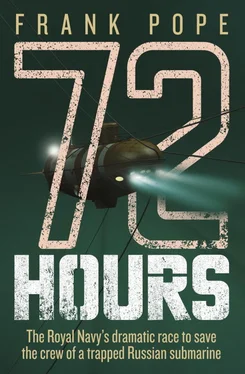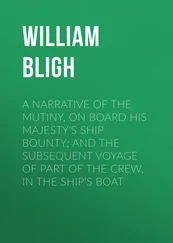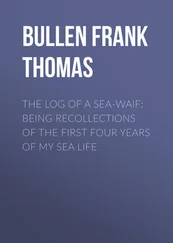In another kind of submarine, such a delay might be fine. But the Priz class, being rescue vehicles, were designed for quick runs to the seabed and back. Dives lasting six hours were already pushing the envelope. With extra oxygen and carbon-dioxide-removing chemicals the endurance might be stretched, but other factors would rapidly crowd in. The batteries, for one, were notoriously weak and would soon start to fade. Then there was the temperature: the hull was not insulated against the cold – on a dive of only a few hours, a thick sweater would do. But over a long immersion the cold would become a problem. And then there was the lack of food and water.
And what if they couldn’t untangle the submersible? All of the Russian Navy’s other submarines had standard hatches with flat, level flanges with which the Priz could mate. But the Priz class did not have them themselves. Nor did they carry equipment that would allow their crews to make an emergency buoyant ascent like other submarines in the fleet. If they had done, the crew of AS-28 could have put on inflatable suits that would shoot them to the surface. But its crew were there to perform rescues, not save themselves. It was ironic, thought Novikov bitterly. They’d joked about it before, but now it was deadly serious. You couldn’t get stuck in a worse vehicle than a Priz rescue submersible.
Thursday 4 August
SS + 1 h 30 mins
18.00 Kamchatka
AS-28 , 210 metres beneath Berezovya Bay
Standing close to the open hatch between the first and second compartments, Captain Lepetyukha began a terse announcement to the crew.
‘The submersible has become temporarily disabled due to illegal fishing activity on the array that left a net draped around the antenna,’ he announced. ‘This is a completely ordinary situation. It has happened many times before. Assistance is being deployed from the surface as I speak.’
The last thing he wanted to do was alarm the less experienced crew. Panic in such a situation was worse than useless – it used up valuable oxygen. The more they allowed their pulses to quicken and their minds to race, the less time they would live.
Lepetyukha’s first priority was to establish that the submersible’s atmosphere was stable. The effect of oxygen and carbon dioxide on the human body changes dramatically with pressure. Although there was no reason to believe that the pressure hull had been damaged by the impact with the array’s buoyancy chamber, it was imperative that all three must be monitored even more carefully than usual. If water was leaking in anywhere, the pressure inside the hull would start to creep up, changing how oxygen, nitrogen and carbon dioxide reacted with their bodies.
All the vehicle’s non-essential systems would soon be shut down and crew activity reduced to a minimum in order to maximise their endurance. It did not mean they were about to run out of air, he reminded them. It was just that they now knew they could not surface alone, and needed to give their rescuers as long as possible to come to their aid.
He ordered the men to make an inventory of all emergency supplies on board – anything that could be used to keep them alive. Then he asked Milachevsky to organise a duty watch to man the underwater telephone and monitor the oxygen and carbon dioxide levels. Each watch would last the standard four hours.
The inventory was ready after only ten minutes; there was only so much space to store such equipment. Running his eye down the list, Lepetyukha’s heart sank. They had only three and a half litres of water and two packets of crackers between the seven of them. There were immersion suits on board, designed to extend survival in the water by a few hours by keeping the body core dry. These would help against the cold which all could already feel creeping into their bones, but there were only six. For the unlucky seventh man, a cobbled-together collection of woollen jumpers and coats would have to suffice.
For ordinary operations the volume of air inside AS-28 ’s hull was easily enough to last the six-hour deployment that the battery life allowed. In case of emergency they had a store of V-64 canisters filled with chemicals that would both absorb carbon dioxide and generate oxygen. On Lepetyukha’s list he saw they had seven tins of V-64, each of which should last for eight hours at a push, making for 56 hours with four crew. They were seven, which gave them 32 hours. They’d better hope they didn’t get anywhere close to that limit, he thought.
Next, Lepetyukha ordered the electrical systems to be shut down. Used lightly, the batteries would start to cool and lose power, but at least they would last longer. The Warrant Officers methodically powered down the sonar systems and disengaged the motor circuits, then flicked off the lights one by one. With a metallic clunk the outside floodlight was extinguished. The starboard porthole, previously filled with the multicoloured patchwork of barnacles that covered the array, went black. Inside, the dim cabin light was replaced by a single red, low-power interior emergency light, and the men were plunged into blood-red darkness.
Captain Lepetyukha took the first watch, along with Gennady Bolonin, the civilian engineer. Lepetyukha ordered the crew to stay silent, for talking used up energy, and energy consumed oxygen and produced carbon dioxide. What’s more, he didn’t want a verbal route by which despair might spread.
Most of the men moved into the stern compartment. Although it was almost identical in size to the forward section, there was less equipment inside. All seven of them would have been able to crush inside at once, hugging the fading warmth of the electric motors, but the communication panel was in the forward compartment, meaning at least one man had to remain up front.
Captain Lepetyukha looked his old friend Bolonin in the eye. The deep crow’s feet of lines and laughter that creased the engineer’s face were now set into a grim mask. The dim red light only made the contrast starker. The two men went back a long way, and it was not hard for them to know what the other was thinking. It was August. Next week they were supposed to be attending the five-year memorial for the 118 sailors who died when the Oscar II-class nuclear submarine Kursk sank in the Barents Sea, at the opposite end of Russia.
On 12 August 2000, the might of the Northern Fleet was north of the Kola Peninsula, two days into a large military exercise. Kursk was preparing to fire a test torpedo at a ship on the surface. At twice the length of a Boeing 747, by far the largest attack submarine in the world, it was the pride of the Russian Navy. But just prior to launch something went badly wrong. The torpedo’s powerful propulsion system began to ignite before the order to launch had been given. The torpedo doors were still closed when the hydrogen peroxide propellant exploded with a force of more than a hundred kilograms of TNT. Exactly 135 seconds later the Kursk hit the seabed, triggering her remaining store of weapons, many of which were equipped with warheads. The front end of the submarine was torn apart, the explosion almost rupturing the final bulkhead that protected the vessel’s two nuclear reactors.
Ninety-five men were killed in those first few minutes, but in the ninth compartment 23 officers and sailors had survived the detonations. Tapping noises were reported by surface vessels listening out for signs of life, but, despite the seabed being at a depth of only 200 metres, for a week the Russian Navy was unable to reach the submarine. A horrified world had looked on as foreign rescue teams were kept away from the site until a full seven days later, by which time all they found was a huge, silent steel tomb.
Читать дальше












